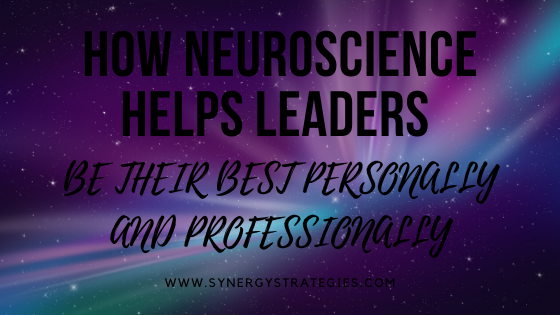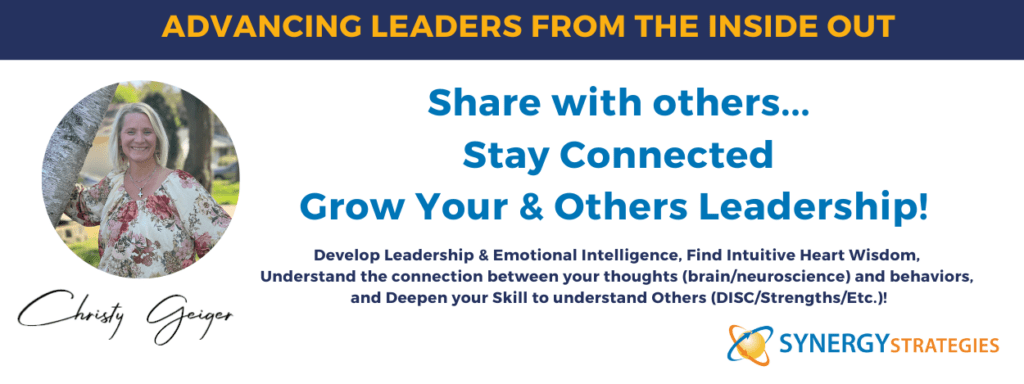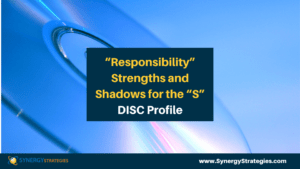Leaders are in a constant state of learning and change. Leaders come to executive coaching to help gain insight for themselves to identify blind spots, to fill in leadership ditches, and to better achieve their goals. An accelerant to this is understanding how the brain works. Neuro awareness and skills can help a leader personally, and then as they hone their skills, they can practice, share, and mentor with their followers. Understanding how the brain works supports ourselves and our team to get the best results for human performance. Why? Because really, we are our brains.
Below are two key buckets to support humans in their brain based skills to learn, understand and adapt: Foundation and Formation. The seven activities under “Foundation” all contribute to building gray matter which keeps our brains healthy, allows us to be our best and is responsible for the mental state we desire. The six concepts under “Formation” provide awareness and strategies to navigate the dynamic and constantly changing state, mood and responses we have as humans to have improved neuro management and intelligence, hence optimizing performance and leadership.
- Foundation. The function of our brain is directly connected with our mental, emotional, and physical performance. The concept of the “healthy mind platter” by David Rock gives seven essentials for humans to operate their best. Based on these activities, research measures the health of your brain. Therefore, these activities need to be part of daily routines and habits to ensure consistent and regular performance. Productivity experts commonly talk about three areas: Focus, sleep, and fitness. The other four areas leaders need to make a concerted effort to include in their schedules, especially in our hard-driving world.
- Focus time. Time in a dedicated zone working diligently on the project or goal, self-managing from distraction, interruption and multitasking. It is a ‘power hour’ where you are “head-down” in concentration and execution.
- Sleep time. Create a positive sleep cycle based on a regular bedtime and rise time. Develop PM habits that help you to wind down, clear your mind, and relax so you can have a solid and deep sleep. Ensure a cool, dark room conducive for deep sleep, etc.
- Physical time. Take regular (daily) time for fitness. This releases toxic stress and energy in the body, fuels the positive brain chemicals, and supports the brain’s optimum health.
- Connection Time. Our brains are social. We need people. Relationships help us to process our thoughts, to receive positive brain chemicals because we feel loved and accepted. Connection keeps us in sync and synergy with those around us, which is affirming to our social brain. Deeper and diverse connections help us to be aware of our bias and widen our ability to have more expansive thinking as we connect with different people.
- Play Time. Take time to be creative and have fun. Where work is a pressing value, allowing this playtime even for children can be challenging much less as adults. The more we get into our careers; we can lose hobbies and “forget” to play. Playing is important. It fuels your mind and is fertile ground for innovation to be born. Find your inner child and allow yourself to “play”. It naturally sparks new ideas, energy, and insights.
- Time in. Ensure intentional time for meditation or mindfulness. Notice your energy, thoughts, and feelings. Be still and present. Take time to journal and reflect on our thoughts. Neuroscience supports mindfulness as a key activity for building gray matter. When we build gray matter through time-in, we are building muscle control, sensory perception, hearing, memory, decision making, learning, emotion regulation, self-control, self-referral processing, and perspective-taking. While doing a longer 30-minute session can be a great mental workout for the day, mindfulness is the practice of regularly resetting. Make it an hourly rhythm, just for 2 minutes. Notice your mood, emotions, and thoughts. Reset and be still to observe “ditches”, consider more desired responses and then visualize yourself responding in a healthy way. Time-in is essential for a healthy mind which is the root of healthy thoughts, feelings, emotions, and actions. Because it feels fluffy, slow, and questionably effective, we as productive humans blow over it in our effort to get things done. It is a staple however for a grounded mind.
- Downtime. After all the day’s activities, the human mind and body become exhausted. It is crucial to have scheduled time that is just to “be” and not to “do”. This down-time is protected and blocked time to just enjoy the present and rest. The “condition” for insights (ah-ha’s and new personal revelations) frequently happen when we are in down-time. We can allow our mind to go where it wants. It can be while taking a shower or a bath, on a walk, while coloring or doodling. It might be picking up, doing a mindless non-work project, etc. This time is critical for the mind to make connections rather than “forced” thinking when we are waiting for everything to come together. It happens when we back off and give “it” space.
- Formation. These awarenesses and skills help process and keep your mind in a healthy space. The foundation equips us to start each day at “go” with a full tank of gas. Next is handling the dynamic nature of our everyday life. We can be in a mentally positive headspace, until “that” happens. “That” is whatever steals your joy, fuels stress, rockets the conflict, creates a distraction, hijacks your mood, etc. The ability to artfully navigate what happens in our minds is imperative to staying in this fueled space. Leadership isn’t hard when everything is good; leadership is challenging when we are struggling with ourselves, our own mind or our team is struggling with theirs.
Below are five awarenesses/tools to support the artful navigation of challenging times. We desire to do things that matter, be accepted, and be our best selves. Because we are all human, having different thoughts, emotions, and lenses through which we view life and experiences is inevitable; understanding ourselves and others is challenging at times. Miscommunication, conflict, and energetic static will occur. When we use these tools, however, we are able to improve processing, communication, and relationships. Because we can quickly find ourselves in an emotional spiral that is less able to have rational thoughts and actions, we need tools to recognize where we are at and return to ‘level’ (the PFC operation mode). While some of these tools may seem obvious or simple, they are solidly backed by science, research, and brain health.- Understand the Limbic – PFC Seesaw. Our brains have many parts used for different functions and purposes; however, let’s focus on the two major areas that are constantly in play as we respond to our world and experiences. The Prefrontal Cortex (PFC) (“logical/rational processing/decision making” part of the brain) and Limbic System (hosts “emotions”, home of the amygdala, senses, door to our subconscious and more). These two major systems play a key role to communicate better, increase emotional intelligence/emotional regulation, reduce conflict, improve relationships, change habits, and more. At a high level, these two regions are constantly adapting, when one is high the other is low and vice versa. To maximize our performance, we want to recognize and understand when we are in a limbic vs PFC mode.
- Practice Simple Labeling. At times when we get in a limbic mode (more emotionally reactive and triggered) it can be common to suppress or express one’s feelings. The neuroscience approach is “name it to tame it”. When we label our feelings we engage the PFC. It might sound like this, “I am noticing I feel angry”. It doesn’t mean a deep dive analysis, rather just “name it”. This instantly supports a shift back to the PFC.
- Develop the skill of Reappraisal. Next, is learning the skill of shaping our perspective. Reappraisal is allowing our internal director to reframe a negative experience and consciously choose how I respond. An example is a child fearful of a thunderstorm reappraised to thunder to a less fearful picture of “God bowling”. In leadership, I might feel irritated at a team member who rambles and I stop listening because I am caught up in judging how they are incapable of bottom lining a point. Reappraisal steps back and says, what are their strengths, and what are they trying to express? See their positive intention and engage in appreciation for them and what they are working to communicate. It isn’t just about a “rosy” outlook, rather intentionally working to shift your mind to the PFC where you can make better decisions, see the bigger picture and think more clearly versus in the limbic hijack mode where you become more emotional, agitated, shut down, not listening and locked in judgment.
- Filter through the SCARF model. Realize one’s mind will constantly move away from the threat and toward the reward. Use the SCARF acronym to remind you of the five concepts that move a person toward reward (positive and safe) or into threat (fight, flight, or freeze). This tool can be used to plan communication in a way that helps people to be one board and supportive as well as using it for yourself or others to get re-centered when triggered. SCARF stands for the five concepts of:
- status: I feel important or feel lesser than and foolish
- certainty: I know what is happening vs I feel out of control
- autonomy: I feel I have a personal voice, say and freedom vs. I have no power
- relatedness: I feel part of the tribe and liked vs I feel rejected and excluded
- fairness: I feel it is right, fair, and just vs I feel cheated, taken advantage of, etc.
- Use the AGES model for insight. When learning something ourselves or communicating with our team, use the AGES model to help digest the information.
- Attention – Learn in bite-size sessions. Take notes. Remove distractions that would make you multitask. Take stretch breaks or practice mindfulness and deep breathing. Ask questions. Create flashcards. Have mind breaks at the end of key parts to allow for the “time-in” absorption. Do this for books you read and topics you learn about. Structure meetings and training to facilitate this type of rhythm.
- Generation – This is applying and making the information relevant to you. This might include drawing a diagram or mind map of the information, explaining what you learned to someone else, debriefing with a peer, asking questions, visualizing, or connecting it with other frameworks and applications. Leave space for yourself to process what you learn (for us: notes after a coaching call, notes after a podcast or chapter of a book, share what you are learning with someone, etc.)(for our team: give time to have them discuss, have them teach it or reflect back what they learned or illustrate it, etc.)
- Emotion – This is where the Limbic system can really work FOR us. We remember emotional things, good and bad. So lock the learning in with emotion. This is why when goal setting we ask how the achievement will make you feel or what is your compelling WHY, these are emotional sync points. Work to generate positive emotions, remember the survival brain looks for the threat/negative, so to create a positive experience make sure to focus on the wins, where things are going well. Create environments that support trust and safety (i.e. do a review in a bright, nicely decorated, open but private room. Sit next to them versus in a dominant chair.)
- Spacing – Allow time for absorbing the information you are learning or sharing. Share info, allow for breaks instead of the working lunch, etc. Create space to revisit the next day. Schedule margin between meetings so you can reflect. This supports the time-in and down-time for the mind to step back from the hard focus and allow the subconscious to connect the dots and insights to the surface.
- Dance with your X and C System for Habit Change. How we process information is also part of the PFC and limbic systems. The C-system is the reflective system found in the PFC while the X-system is the reflexive system of the limbic system. Your C-system is shown to have the strongest ability to create habit change (Designing systems, paying attention, strategizing / stacking habits, designing social accountability, planning a 66-day strategy to implement a change). This system requires conscious work and effort. The brain can grow tired but this is the area that is most effective for long term change. The X system is responsible for our emotions, senses, and more subconscious thoughts and actions, really what we do without thinking. Because we have bias and mental shortcuts that are in our X system we are not always aware of the factors that influence our thoughts, emotions, and what we see (halo effect). The X system connects with positive motivation, our WHY, and intuition. It can be an internal motivator that supports the activity of the C System for that desired change. Be mindful of using these systems to create and lead change in yourself and others.
These areas are all daily opportunities we have as our mind gears up for being our best self. The healthier our mind platter, the better we weather ups and downs. The more we are aware of the brain’s dynamics we can be more skillful to navigate challenges. Having these awareness’s and tools in your leader toolbox will help avoid emotional short circuits, stay in healthy emotional intelligence (EI) and a responsive mind.
How can a leader measure what is working?
- Foundation: For one week, track the number of minutes spent each day doing each of the 7 healthy mind platter elements. Measure the results you want (i.e. energy, happy team, thinking clearly, strong focus, etc.) Notice the pattern between time spent in the healthy mind platter and the correlation with your desired results.
- Formation: Create a daily scorecard for yourself. Take one month’s notice and track. Daily journal (time-in) and intentionally notice your state of mind, tools used, and perceived impact on you and the team. Notice how many times a day you got hijacked and how you shifted to your PFC (i.e. labeling, reappraisal, scarf, or something else). At the end of the week, notice and record what tools work better for you and the team. Additionally, involve the team. This will give you social accountability increasing your ability to stick with it. Educate the team on the formation of awarenesses and tools. Give them permission to practice and use the skills as well. Weekly in your team huddle, debrief the effectiveness of how a tool worked. Have the team give a weekly score 0 (low)-5 (high) how they experienced communication, safety, and positivity of the team. The higher the scores show the use and effectiveness of the tools and a positive shift for the team.
More could be shared on each of these tools. This is just a high level “fly over” spotlighting key neuro tools leaders can use to help their own leadership, increase their EI and effectiveness as well as enhance the performance of their team due to the leader’s improved communication and ability to mentor the followers in these same skills that support the brain in stronger performance and health.
To explore more see this article:HOW TO USE THE SCARF MODEL TO LEAD AND COMMUNICATE WITH PEOPLE ESPECIALLY IN A CRISIS






